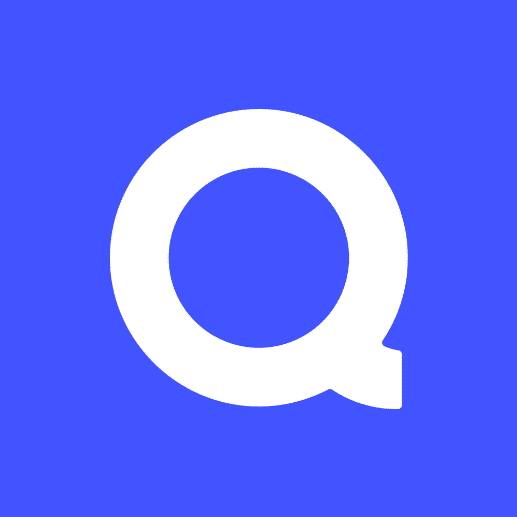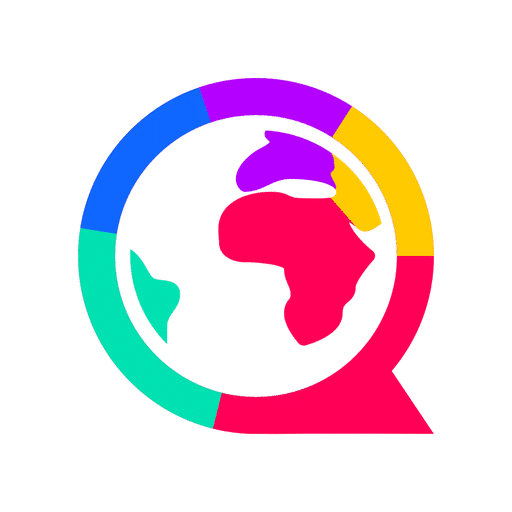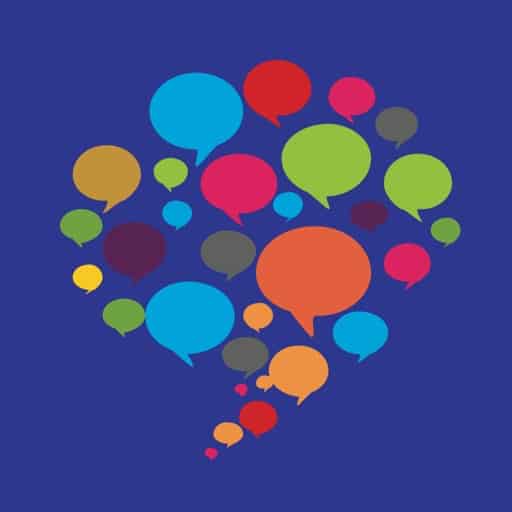
How to Introduce Yourself in Korean: The 15-minute Guide
Becoming completely fluent in 국어 (the Korean language) can take years.
But if you only want to learn how to introduce yourself in Korean, all you need is 15 minutes!
In this article, I’ll teach you how to say “Hello, my name is…” and other useful phrases for when you first meet somebody. I’ll also provide you with a sample conversation and websites or apps you can use to help solidify what you’ve learned.
Contents
- How to Introduce Yourself in Korean: An Overview
- Basic Phrases for Introducing Yourself in Korean
- Sample Conversation for Introducing Yourself in Korean
- Online Resources for Practicing Your Introducing Yourself in Korean
Download: This blog post is available as a convenient and portable PDF that you can take anywhere. Click here to get a copy. (Download)
How to Introduce Yourself in Korean: An Overview
In English, when you first meet somebody, you probably say some variation of “Hello, my name is…” You can use the same phrase in English no matter who you’re talking to.
In Korean, you need to change the phrase slightly depending on who you’re speaking with. The way you speak to older members of the family, for example, will differ from the way you speak to close friends.
In case you’re not familiar with the different levels of formality in Korean, here’s a quick guide.
- 반말 (Casual language): Used with people younger than you and close friends.
- 존댓말 (Polite language): Used with strangers and people you don’t know well. It comes in two forms: informal and formal. Sentences written in the informal version usually end with a “ 요 ” on the verb. Sentences written in the formal version often end in (ㅡ) ㅂ니다 .
For our purposes, we’re going to focus on the polite informal way of speaking. You can use this form in most day-to-day situations.
Basic Phrases for Introducing Yourself in Korean
“Hello, My Name Is…”
Just like in English, there are several ways to introduce yourself in Korean.
When you’re meeting somebody for the first time, you’ll use one of the following phrases to say “Hello, my name is…”
If your name ends in a vowel, say:
안녕하세요? 저는 _____ 예요 .
Hello, my name is _____.
If your name ends in a consonant, say:
안녕하세요? 저는 _____ 이에요 .
Hello, my name is _____.
You can also use one of the following phrases with no difference in meaning.
If your name ends in a vowel:
제 이름은 _____ 예요 .
My name is _____.
And if your name ends in a consonant:
제 이름은 _____ 이에요 .
My name is _____.
If you want to ask somebody else what their name is, you can say:
이름이 뭐예요?
What is your name?
“Nice to Meet You”
There are several ways to say “nice to meet you” in Korean, but one of the simplest is:
만나서 반가워요.
Nice to meet you.
“I’m From…”
Shortly after meeting somebody, they might ask you about your background. You can use this phrase to tell somebody what country or city you’re from:
저는 _____ 에서 왔어요 .
I come from _____.
Korean speakers often drop the word “I” from sentences. Usually, when you can guess the subject of the sentence from the context, you can drop 저는 without changing the meaning.
Here’s a list of some countries you might be from. Most countries sound similar to their English counterpart, but some others (like America, Australia and England) are different.
Canada: 캐나다
England: 영국
America: 미국
Ireland: 아일랜드
Scotland: 스코틀랜드
Northern Ireland: 북아일랜드
New Zealand: 뉴질랜드
India: 인도
Australia: 호주
The Philippines: 필리핀
Jamaica: 자메이카
The Bahamas: 바하마 제도
Talking About Your Age
When meeting somebody for the first time, you may want to ask them how old they are so you know how formal you should be when speaking.
Saying your age is easy. You can just give a number followed by this phrase:
_____ 살이에요 .
I am _____ years old.
Keep in mind that there are two different number systems in Korean. For your age, you should use native Korean numbers. If you need to brush up on your Korean numbers, here’s a reminder.
One: 하나 ( 한 )
Two: 둘 ( 두 )
Three: 셋 ( 세 )
Four: 넷 ( 네 )
Five: 다섯
Six: 여섯
Seven: 일곱
Eight: 여덟
Nine: 아홉
Ten: 열
Twenty: 스물 ( 스무 )
Thirty: 서른
Forty: 마흔
Fifty: 쉰
Sixty: 예순
Seventy: 일흔
Eighty: 여든
Ninety: 아흔
If you want to ask someone how old they are, you can use either of the following expressions, depending on whether the context is formal or casual.
나이가 어떻게 되세요?
How old are you? (Formal)
몇 살이에요?
How old are you? (Casual)
If you’re asking somebody older than you their age, you should say:
연세가 어떻게 되세요?
How old are you?
Talking About Your Job
If you want to tell somebody what you do for work, you can use the following expression, putting your job title in the blank:
저는 _____ 이에요/예요 .
I am a _____.
Here’s a list of some common job titles.
Teacher: 선생님
Student: 학생
Doctor: 의사
Nurse: 간호사
Scientist: 과학자
Athlete: 운동 선수
If you want to ask somebody what their job is, you can use the following expression. It loosely translates to “what is your profession?”
무슨 일 하세요?
What’s your job?
Sample Conversation for Introducing Yourself in Korean
Congratulations—you now have a solid foundation for introducing yourself and striking up a conversation in Korean!
Now that you’ve learned some basic phrases, here’s an example of a conversation putting them together:
Ryan: 안녕하세요? 저는 Ryan이에요. 이름이 뭐예요?
Hello, I’m Ryan. What’s your name?
Min-Soo: 저는 Min-Soo예요. 한국에서 왔어요.
I’m Min-Soo. I’m from Korea.
Ryan: 만나서 반가워요.
Nice to meet you.
Min-Soo: 저도요. Ryan, 나이가 어떻게 되세요?
Same to you. How old are you, Ryan?
Ryan: 25살이에요. 무슨 일 하세요?
I’m 25 years old. What’s your job?
Min-Soo: 학생이에요.
I’m a student.
This is just one example of how this conversation might go. To really get the ball rolling, call up a classmate, conversation partner or Korean-speaking friend and run this dialogue several different times with variations in how the two characters respond. Record yourself and then listen back for extra pronunciation practice.
Online Resources for Practicing Your Introducing Yourself in Korean
Merely learning these phrases once isn’t enough. You have to make time to practice!
Here are a few apps and websites to help you reinforce what you’ve learned here:
Watch Authentic Korean Videos on FluentU
You can look up all of the phrases above to see them in action in real Korean-language media.
Here's a quick look at the variety of video choices available to you:

Each word in the interactive captions comes with a definition, audio, image, example sentences and more.

Access a complete interactive transcript of every video under the Dialogue tab, and easily review words and phrases from the video under Vocab.

Don't stop there, though. You can use FluentU’s unique quizzes to learn the vocabulary and phrases from the video through fun questions.

FluentU even tracks your progress and remembers all the words you've learned, making for a 100% personalized experience.
Review sessions use video context to help embed the words in your memory. The best part? You can access the full FluentU video library with a free trial!
Start using the FluentU website on your computer or tablet or, better yet, download the FluentU app from the iTunes or Google Play store. Click here to take advantage of our current sale! (Expires at the end of this month.)
Connect with Native Speakers on HelloTalk
HelloTalk is a social media app that connects you with native speakers interested in learning your language.
You can chat, ask questions and make corrections to each other’s speech and writing. This app is great for practicing introductions, because you’ll have to introduce yourself every time you connect with someone new!
If you want to know more about this app, read our HelloTalk review.
Run Grammar Drills on How to Study Korean
If you want to improve your grammar and develop your fluency, How to Study Korean is one of the best free resources available on the internet.
The site has more than 150 lessons to help you improve your Korean language ability, plus games and activities to help you practice.
Work on Memorization with Korean Flashcards from Quizlet
 If you want to learn even more phrases you can use right away in the real world, this Quizlet card set can help. Once you have the phrases memorized, you can test yourself to see if you’ve retained them. Alternatively, you can also use other flashcard apps that feature Korean.
If you want to learn even more phrases you can use right away in the real world, this Quizlet card set can help. Once you have the phrases memorized, you can test yourself to see if you’ve retained them. Alternatively, you can also use other flashcard apps that feature Korean.
If you prefer your flashcards the old-fashioned way, that’s great too: simply make some using paper or notecards. Writing these phrases down will help you practice spelling and aid in memorization as well.
Chat with a Robot on MondlyAR
MondlyAR—part of the broader Mondly language-learning service—provides a virtual reality chatbox feature that can help you practice phrases you’ve learned.
Try starting a conversation and practicing the phrases you’ve learned today. Using a chatbot can be a great way to build confidence before reaching out to an actual native speaker. You can learn more about whether MondlyAR is the app for you via our review.
Other than the above, there are plenty of apps you can check out to level up your Korean.
For more information on how to introduce yourself in Korean, you can also watch this YouTube video:
And if you want to get your honorifics right, this video can help you out:
See? 15 minutes of your time, and you’re already a more confident Korean speaker.
Now that you know some basic phrases, you can use them to kickstart your next conversation in Korean. This just might be the perfect moment to transform that Korean-speaking stranger into a new friend.
Happy learning!
Download: This blog post is available as a convenient and portable PDF that you can take anywhere. Click here to get a copy. (Download)




